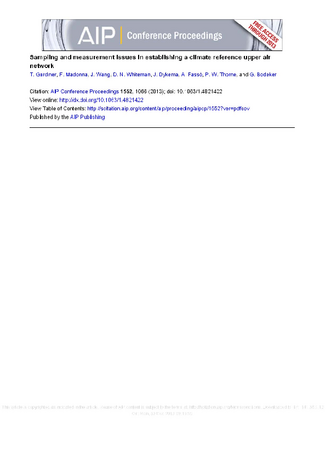Title
Sampling and measurement issues in establishing a climate reference upper air network
Authors
T. Gardiner, F. Madonna, J. Wang, D. N. Whiteman, J. Dykema, A. Fassò, P. W. Thorne, G. Bodeker
Published
by AIP Conference Proceedings (AIP) at September 2013
Abstract
The GCOS Reference Upper Air Network (GRUAN) is an international reference observing network, designed to meet climate requirements and to fill a major void in the current global observing system. Upper air observations within the GRUAN network will provide long-term high-quality climate records, will be used to constrain and validate data from space based remote sensors, and will provide accurate data for the study of atmospheric processes. The network covers measurements of a range of key climate variables including temperature. Implementation of the network has started, and as part of this process a number of scientific questions need to be addressed in order to establish a viable climate reference upper air network, in addition to meeting the other objectives for the network measurements. These include quantifying collocation issues for different measurement techniques including the impact on the overall uncertainty of combined measurements; change management requirements when switching between sensors; assessing the benefit of complementary measurements of the same variable using different measurement techniques; and establishing the appropriate sampling strategy to determine long-term trends. This paper reviews the work that is currently underway to address these issues.
Citation
AIP Conference Proceedings 1552, 1066 (2016); doi: dx.doi.org10.1063/1.4821422
